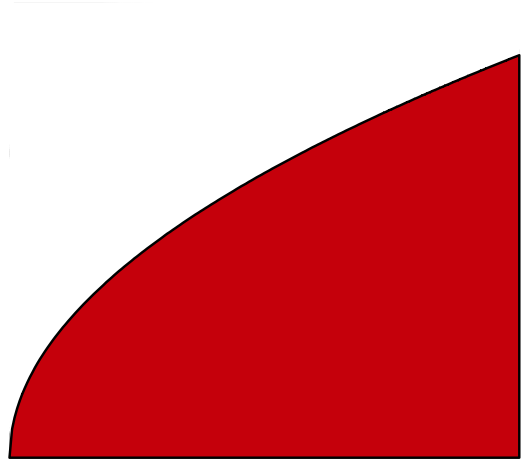You know those interview questions? The ones where you’re supposed to make spurious assumptions and use them to compute something like: “How many piano tuners are there in Chicago?”
The correct term for one of these is a “Fermi Problem” after Enrico Fermi the physicist, who apparently was spectacularly good at such problems.
Legend has it he made a stunningly accurate guess at the power of a Nuclear Explosion based on how far some nearby scraps of paper moved.
The point of Fermi Problems—and the reason they’re so popular in interviews—is to find the quickest possible path to an answer.
Even if the answer itself isn’t close enough to be useful the intuition it gives you is.
And Fermi had a great love for finding this intuition in a problem.
Integration is one of the most deceptively intuitive problems out there, in the picture above for example the answer is just the red.
This easy to digest definition is what you get in the first 5 minutes of a calculus class, and then the other 1795 minutes everything is complicated and unrelated to the red.
And integrals aren’t just hard for you, it really doesn’t take much to make an integral impossible for everyone.
For example gets you a forlorn “no result found in terms of standard mathematical functions” from Wolfram Alpha. Math just doesn’t have a good answer for it.
But this shouldn’t sit well with any of us because you know, and I know that that function has some red under it.
And it really didn’t sit well with Fermi so here’s what he’d do: he’d draw the function out with pencil and paper, cut it out and then weigh it.
Divide that weight by that of a 1 by 1 square of the same paper and that’s the answer.
All he needed was the first 5 minutes.

